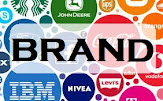A brand is the way an audience experiences and perceives a product or company. It is an identifier. Naturally therefore, branding is the process of creating and managing this identity.
The term originates from the practice of permanently marking the skin of live cattle with unique codes or symbols with the use of hot iron templates. This practice called 'branding' helped cowboys to readily identify each animal.
Internal Brand & External Brand for Brand Positioning
A well defined brand has internal and external components. As with human identity, a brand has identifiers. As seen from the list below, your internal brand is designed by the leadership to be building blocks that inform your external brand design and all actions by the brand. External identifiers are what the public experiences. A brand has a name, A brand's logo is like a human signature, its corporate colors like a human's style of clothing and so on. A brand even has a personality that can either attract or repel some people. Like humans, your brand may grow and evolve over time. Finally and like a human being, a brand gives the world its products and services which is essentially the culmination of everything it is within.
- Mission(s) and vision(s). Also see unique value propositions.
- core values.
- Brand architecture
- Brand personality
- brand name
- logo
- mascot
- style (brand style guide, brand color)
- brand voice (voice & tone, tagline, campaign slogans)
- brand strategies (lifestyle branding)
- products (product mix)
- brand story
- brand collateral
Do this design process within the context of your industry analysis, especially as it relates to your competition and customers. Where can you position your brand within the market? Specifically, what are the various forms of competition and what gaps can you fill? Gaps or 'opportunities' are unmet customer needs.
In short, designing your internal and external brand involves defining your target market beforehand and manouevring around competition.
Prerequisite considerations for internal and external brand design.
- competitive SWOT analysis(Example using the methodology of Porter's '5 competitive forces')
- definition of target market (and segments)
CONTENT RELATED TO A BRAND AND BRANDING 101


No comments:
Post a Comment
Note: Only a member of this blog may post a comment.